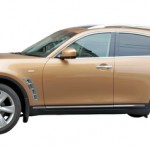Where do you work? If it's the wrong place, you might be paying a higher rate for your auto insurance! Many factors impact your premium, and your driving record will be strongly considered along with your credit rating. The type of car you drive is a factor along with the distance of your daily commute. The zip code you park your vehicle in, and whether or not it spends the night in a garage, will also affect your car insurance payment.
Along with all of the previously-mentioned factors, there is one more item that you may not realize is impacting your rate: Your occupation. Your job can have a dramatic effect on your insurance bill, both good and bad. Depending on the type of work, the difference could easily be tens of thousands of dollars over your lifetime. We're not advocating leaving your employer if you're in a category that raises your premium, but becoming aware of its impact may be advantageous. NOTE: Of course, utilizing your vehicle for delivery, transportation, or hauling materials will always increase the premium. Special commercial liability coverage may be needed.
Insurance Statistics
Insurance companies love statistics. They analyze data in order to assess how likely you are to have an accident. The process has become increasingly scientific, with so much more credible data now available. Carriers can predict with a fairly high degree of accuracy how likely it is that you will have an accident, get a moving violation, or be involved in a handful of other scenarios. And yes, sometimes the color of your car, how may hours you sleep, or how many passengers you regularly transport, can also provide valuable data. Modern electronic devices can be attached to your vehicle (with your permission), and conceivably reduce your auto insurance costs.
So how does your occupation factor into these calculations? When it relates to your job, insurers consider not only statistics, but also occupational behaviors and the location of your work and travel patterns. If your car is part of your business or used for work-related functions on a regular basis, this will have an impact on your premium. If you deliver products or transport items from a store to customers, it will play a role in determining the cost of your coverage (with some companies, but not all). Modified vehicles are likely to be charged a higher rate.
A special surcharge may apply, depending upon how often the vehicle is used and for what reason. Long-haul transportation generates the highest premiums because of the excess miles and wear and tear on the vehicle and highways. Although larger trucks are more safe to drive compared to 25 years ago, when they are involved in an accident, typically multiple vehicles are involved and the risk of driver and passenger injuries increases.
Also, if you drive one of the safest vehicles on the road, you'll save money with lower premiums. The combination of one of these vehicles, coupled with a low-risk occupation, will certainly help your budget. And although they cost more than compacts, smaller SUVs are often safer to drive, which translates into bigger savings. Typically, gas mileage is in the 24 mpg-34 mpg range and AWD and 4WD are offered on most vehicles. The extra cost is approximately $1,000-$1,500. Hybrid vehicles continue to increase in popularity, although the wait time to purchase these vehicles can be weeks, and sometimes months.
Not only will the number of miles traveled increase (when your car or truck is used for business, and not pleasure), but there may be increased liability exposure, including occasional passengers that are transported. Since medical payments to passengers are a covered expense, the increased incidences could (not always) change the rate. There also is a slight risk that one of the passengers actually drives the vehicle. Private health insurance coverage is considered "secondary" when a claim is filed, so whether someone is uninsured or covered on a private or group plan, there is very little impact. Most Americans are covered through an employer-provided group plan, private Marketplace plan, non-Obamacare plan, Medicaid, or Medicare.
Several companies have special "business" rating classes, depending on the frequency of business usage. If you make several deliveries to a wide area, you will ultimately pay a higher premium. If hazardous waste is involved, you may also need a special permit or license from the local or state government. It's also possible you may need an additional liability rider, which may require you to increase underlying limits on other homeowner or rental-property policies (if an umbrella rider is utilized). Although the minimum amount for these riders is typically $500,000 or $1 million, higher limits are recommended for businesses. Larger corporations may self-insure their risk or seek reinsurance coverage.
Your Personality Could Impact The Rate You Pay
According to insurers, certain personality types are more likely to work in specific occupations and have a greater chance of getting into a car accident. While you may disagree with their assessment, carriers have immense databases of statistical information to back up their reasoning when it comes to risk and occupations. Typically, the information-gathering process is constantly updated, with additional occupations being added and subtracted to the "list." With more employers utilizing virtual jobs and remote locations, carriers are updating their underwriting criteria, although state laws must always be obeyed. Additional discounts will sometimes apply to persons working virtual instead of driving to work every day.
Factors Companies Consider Regarding Employment:
• Stress Levels
• Occupational training
• Use of public transportation during work day
• Work related travel
What is the result of all this data crunching? According to research, the following occupations are given a lower risk factor, which sometimes leads to lower car insurance rates:
• Pilots
• Scientists
• Teachers
• Nurses
• Artists
• Police Officers
While you may be wondering how a pilot warrants a lower premium, research verifies that each of these jobs require a person who is very detailed-oriented and meticulous, which positively impacts their driving habits. The majority of nurses and teachers are female, which helps lower the risk levels for this occupational group. Females typically are involved in less accidents, and therefore are less costly to cover, especially when they are under age 25. Between the ages of 30 and 60, this difference greatly reduces. Of course, retired persons drive less, and therefore have fewer accidents.
It's also important to point out that MOST companies do NOT use occupational data when determining rates. Although there may be sufficient data to warrant charging a higher (or lower) rate, it often is not "politically correct" to perhaps charge a pilot less than a mechanic because of raw statistics. The practice of charging different prices for each sex is being debated in a few states, despite decades of research clearly proving that young male drivers are the biggest risk on the road today. However, unlike healthcare coverage, gender and "pre-existing" driving records can increase or decrease the cost of your policy. And also, unlike a marketplace healthcare plan, an auto insurance carrier can terminate your covearge.
Higher Risk Occupations
Of course...there are are high-risk occupations that usually result in higher premiums. NOTE: Not all carriers impose this surcharge. And if you work in this particular field, we'll search the carriers that will not charge you a higher premium. A few examples are:
• Lawyers
• Doctors
• Business Owners
• Builders
• Business Executives
These occupations usually come with plenty of stress and long hours. Persons associated with this type of work also tend to be self-employed, highly-motivated, and they often use their cell phone while away from home. All of these factors add up to higher insurance premiums. In fairness, there's nothing wrong with being highly-motivated and taking your cell phone on trips. We all do! But the longer work hours are probably one of the biggest contributing factors.
Perhaps it's the combination of many of these factors that sometimes results in paying a higher rate. And remember that not all carriers will charge more for these types of occupations. Part of our job is to find the companies that offer you the best prices, based on all of the underwriting criteria, including your occupation. If you're curious if your current insurer utilizes this data, simply contact us and we'll research that for you. Property and casualty underwriting guidelines frequently change, so it's prudent to remain updated on any recent changes.
Other Occupational Factors That Affect Car Insurance
How often you use your car for work, and the time of day you are on the road will also affect your premium. If most of your job consists of driving, you may need a commercial policy to protect you, unless you are utilizing a company-furnished vehicle. In that situation, you are more than likely listed as a covered driver and it will have no impact on your personal policy. However, your driving record and previous violations (if any) will impact the cost of coverage your employer pays on their commercial policy.
Of course, the expected personal traits that impact your auto premium are well-documented. They include the type of vehicle you own, how far it is driven, where you live, your credit score, and the type of coverage (liability limits and deductibles) that you have.
Jobs that involve driving during the busiest times of day will raise your rates. Examples would be builders, contractors, and traveling salespeople. Statistically more accidents happen during rush hour so if you spend your day in the car you are a bigger risk. Constantly being on the road between 4:00 pm and 7:00 pm raises the likeliness of an incident occurring.
Unfortunately, even if you work at night, there is a good chance you will pay more for coverage as late night drivers could have a greater chance of accidents due to fatigue. Having your vehicle parked outside at night while you work will also raise rates as it is more likely to be vandalized. Of course, a high-crime area will be treated much differently than a suburban area with very few vehicle thefts. That helps explain why policy prices can vary by as much as 30% within a 10-mile radius.
While commercial drivers are usually insured through their employers, casual delivery drivers may be on their own. Even if you are only delivering pizza part time, your insurer may deny your claim if an accident happens while you are working. You can check with your employer to see if they offer coverage. If not, consider a commercial policy which will be more costly, but will guarantee you are covered in the event of an on-the-job accident. A more affordable option may be a simple rider than can be added to your existing coverage. The cost could be as little as $5-$15 per month. However, the rider may only be available to specific vehicles with limits on the number of driven miles per year.


